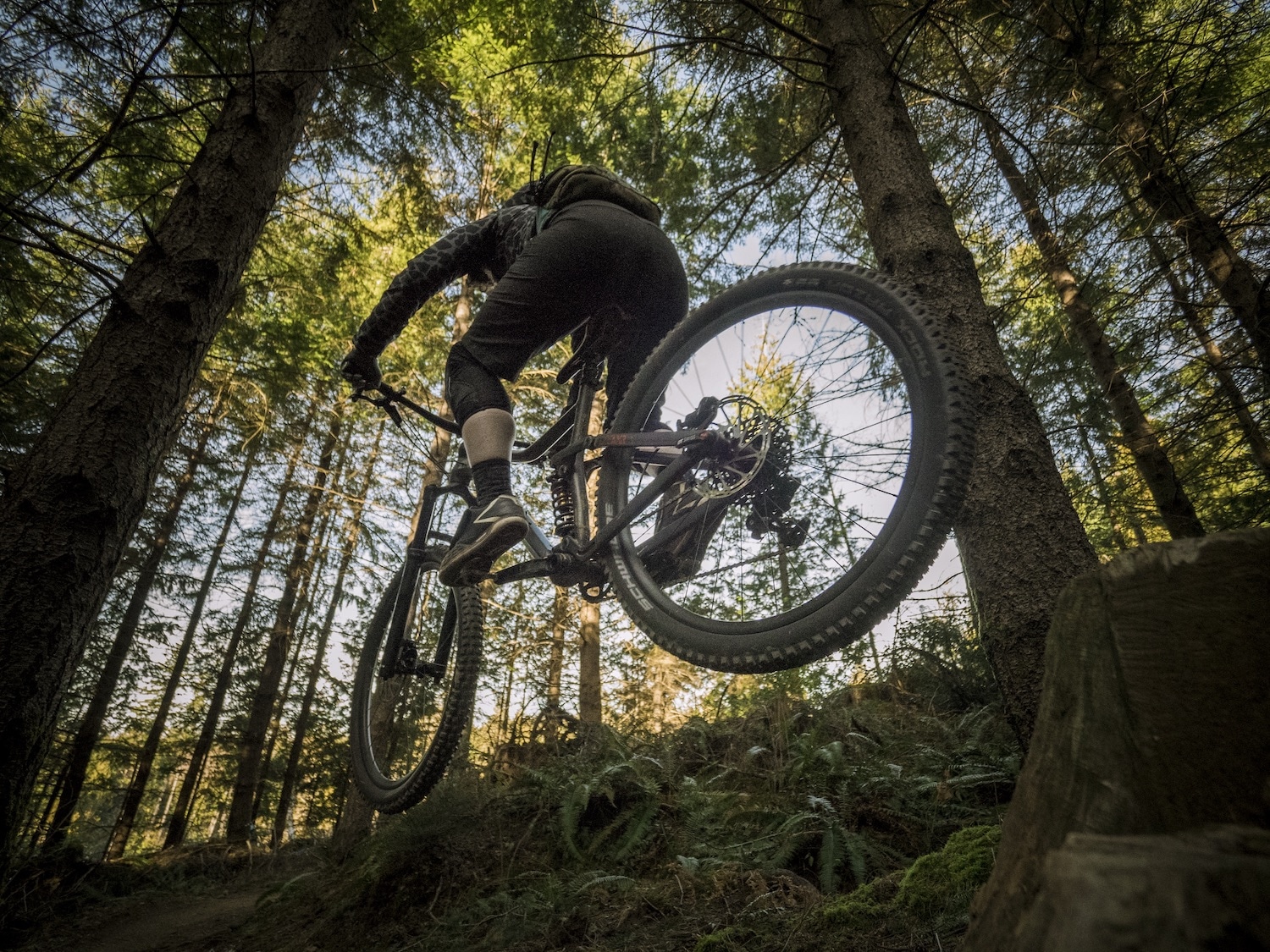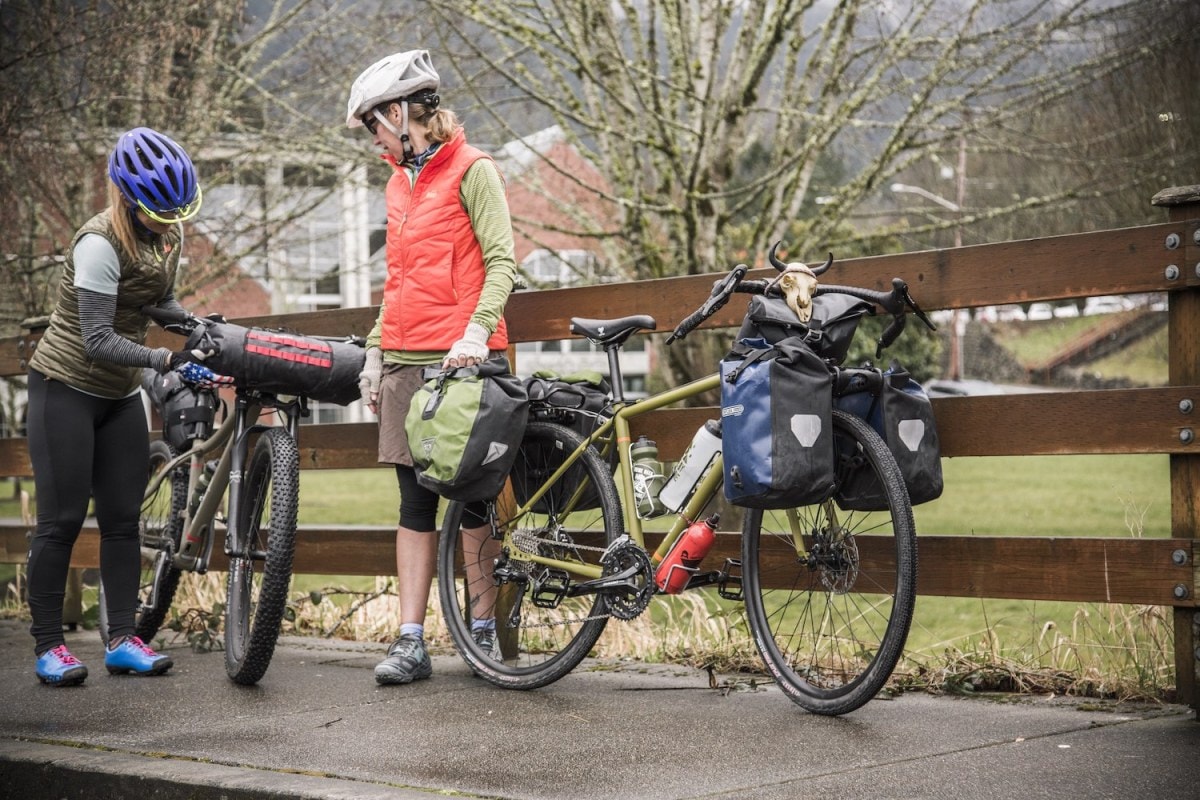Have you ever hit the trail unprepared for the mechanical calamities that might unfold? Don’t let your visions of perfect singletrack cause you to set out with cavalier disregard for the for the maladies that can turn even the most casual ride into an arduous slog. With the right trailside tricks, tips and gear, you can maintain safety—and self-sufficiency—on every mountain bike ride.
If you want to get schooled on some fundamental maintenance techniques, like fixing a flat tire and tuning a derailleur, I suggest joining one of REI’s Bike Maintenance Clinics. In the meantime, I called up two mountain bikers who live in Park City, Utah, and ride the trails almost every day. If anyone knows how to get unstuck, it’s these guys.
Ian McDonnell is a bike mechanic who has been wrenching on bikes for more than a decade, first in Albany, New York, and now in Park City. McDonnell enlightened me with some of his favorite tips for how to avoid turning your everyday ride into an unintentional epic. Most mechanical failures come from some kind of crash or impact, said McDonnell, so it’s important to check your bike carefully for issues before you start riding again after such an event.
“A small crack in your carbon handlebars could result in catastrophic failure, or a bent derailleur hanger could end up sucking your derailleur into the spokes when you shift,” he said. “Even after fixing the initial issue, give your bike a quick once-over before you get going. If you’ve had a decent crash, it’s always good idea to get your bike looked over by a professional mechanic before your next ride.”
Stu Johnson is a mountain bike guide for White Pine Touring in the summer and a longtime ski patroller for Park City Mountain in the colder months. Johnson’s experience getting big groups through long rides has made him a fount of knowledge for dealing with unexpected trailside drama. Johnson’s first bit of advice? A little preparation goes a long way.
“Before you even head out on the trail, you should have a plan in place for how and where to get out,” said Johnson. “Make sure you know the evacuation routes from your planned trail, which can save you valuable time in a medical or mechanical emergency. Apps make it easy, and if you do this for your after-work rides, it’ll become second nature for your bigger rides.”
The Essentials for Every Ride
Let’s be real. Most of us aren’t going to carry the kitchen sink on our quick, post-work loop, but trouble can happen on any ride. I asked McDonnell and Johnson which essential pieces of gear you should take on every ride to get you and your buddies through the common mechanical malfunctions like flat tires, drivetrain issues and loose bolts.
Best yet, all of them can be carried on your bike frame so you’ll never leave home without them. Or, if you live in a place that gets more rain, organize your tools and supplies in a seat bag, fanny pack, hydration pack or mini keg that fits in a bottle cage.
By far, the most common mechanical failure McDonnell said he sees are flat tires. “A tube and a good hand pump will get you out of most situations,” he said.
Bike Tube: Tubes come in three diameters, 26, 27.5 and 29-inch, and two valve types, Presta and Schrader. Try to bring a tube that fits your specific bike, but in a pinch it’s possible to make almost any tube work for almost any tire.
Dustin Kingman, an avid rider and content producer for REI, said he just carries the middle size, 27.5, which works great on any wheel. Attach the rolled-up tube to your bike frame with a ski strap or some electrical tape so it’s always with you.
Mini-Pump: A spare tube is worthless if you can’t fill it with air. The higher-volume mini-pumps work faster, but any reasonable option will get you home. Some people prefer CO2 inflation systems, but you only get one shot with many of them. Most mini-pumps come with a tube-mounting bracket, or attach easily with a bracket mounted to your bike’s water bottle holder, but a ski strap will also get the job done.
Tire Lever: Getting tires on and off over the rim bead can be challenging, especially when your hands are covered in a filthy combination of dirt, sweat and tire sealant. A good tire lever makes easy work of even the most stubborn tire beads. Attach it to your bike with the same strap as your spare tube. In a pinch, Kingman said, you can also use your quick-release lever.
If you are riding on tubeless tires, tire plugs—which are tough butyl-rubber strips used to patch a puncture in a bike tire—often make an easier, permanent fix, said McDonnell.
“Plugs only take a few seconds to install, and you don’t have to mess around with unseating and seating the tire bead,” he said. “For bigger slits in your tire where a plug won’t cut it, you can literally throw money at the problem. A dollar bill is very fibrous, so you can use one as a patch to keep your tube from bulging out of the slit where it’ll be vulnerable to flat again.”
Bike Multi-Tool: A bike-specific multi-tool is worth its weight in gold, whether it’s to tighten a loose shock bolt, remove a wheel axle or adjust a finicky derailleur. Mechanic Ian McDonnell suggests a multi-tool with all the most commonly used fittings, including number 3, 4 and 5 Allen keys, a T25 Torx tool, Phillips and flathead screwdrivers, a spoke wrench and a functional chain. You pay for what you get, so don’t skimp here.
These tools are often too small to be strapped on a bike with a ski strap, so keep it in your pocket or your pack, unless your tool is designed with a carry system. But consider that if you carry tools in your pocket and you fall on that pocket, it’s going to hurt a lot more. Kingman said he rides with a multi-tool in his shorts pocket, but he picked the shape and size of the tool accordingly. “Some tools work better than others for pocket carry,” he said.
Replacement Chain Link (Quick Link): Broken chains are a common problem but an easy fix if you’re prepared with a quick link. Replacement chain links come in 8, 9, 10, 11 and 12 speed for SRAM and Shimano chains, so be sure you’re carrying the right one for your ride. Use electrical tape to attach the quick link to your brake cable so it’s within reach on every ride.
Extras for Longer and Group Rides
Far-flung adventures require a little more gear and planning. You can get by without a lot of these items, but according to Johnson, a few grams of gear in your bag can go a long way towards salvaging your ride and avoiding hours of drudgery. Here are Johnson’s tips for the gear to bring on longer rides.
Shifter Cable: If a broken cable renders your derailleur useless or a crash turns your dropper into a retro, rigid post, you’ll be happy to have a spare cable in tow. You can always tape the excess cable out of the way if you’re not carrying any cable cutters. Kingman also recommends shortening your shift housing to get a little more cable length.
Brake Pads: Long rides are often the death knell for brake components, whether that’s worn pads or a poorly bled brake. A spare brake pad can save the day when the lever pulls all the way to the handlebar and you’re miles from the trailhead. Be sure to pack the compatible model for your brakes.
Zip Ties: Zip ties are nearly as multifunctional as duct tape; just make sure you have something to cut the extra tail. Bring various sizes along. Johnson uses zip ties for everything from damaged derailleurs to reattaching errant brake and shifter cables or dislodged cockpit levers.
Spare Derailleur Hanger: Derailleur hangers are designed to bend and break, sparing your expensive derailleur from catastrophic damage. Broken hangers, however, render your derailleur useless for the remainder of the ride. Every bike has its own specific hanger, so it’s up to each rider to supply his or her own. They take only moments to install, and most new bikes are sold with a spare. Having one when you need it will save you miles of single-speed heartbreak.
Additional Spare Tubes: More miles and more riders mean more flats. Again, most any tube will work in a predicament, but the sizes 27.5-inch or 29-inch tube are the easiest to adapt to all the wheel sizes your group is likely to have.
Forgetting something?
For an even more comprehensive checklist for mountain bikers, take a look at this one from our Expert Advice team.

